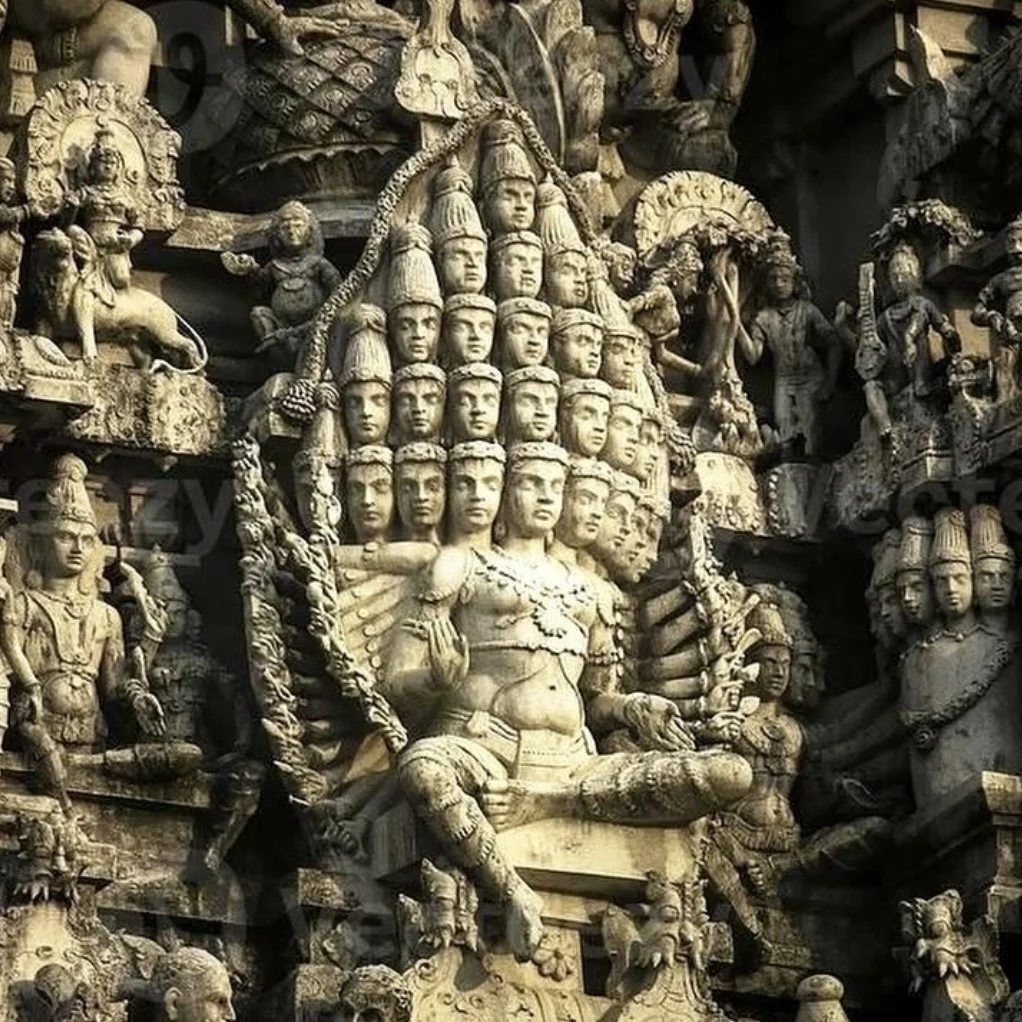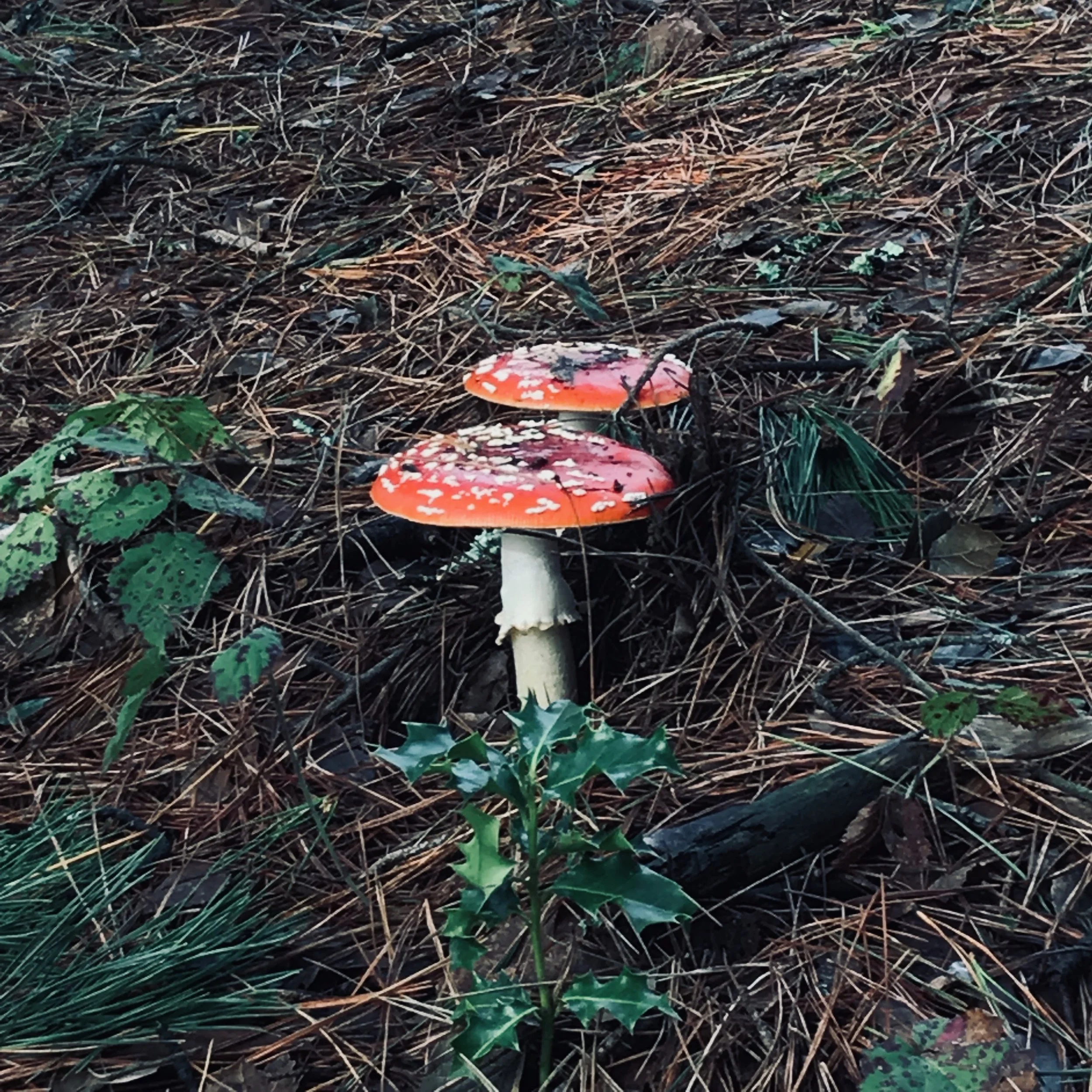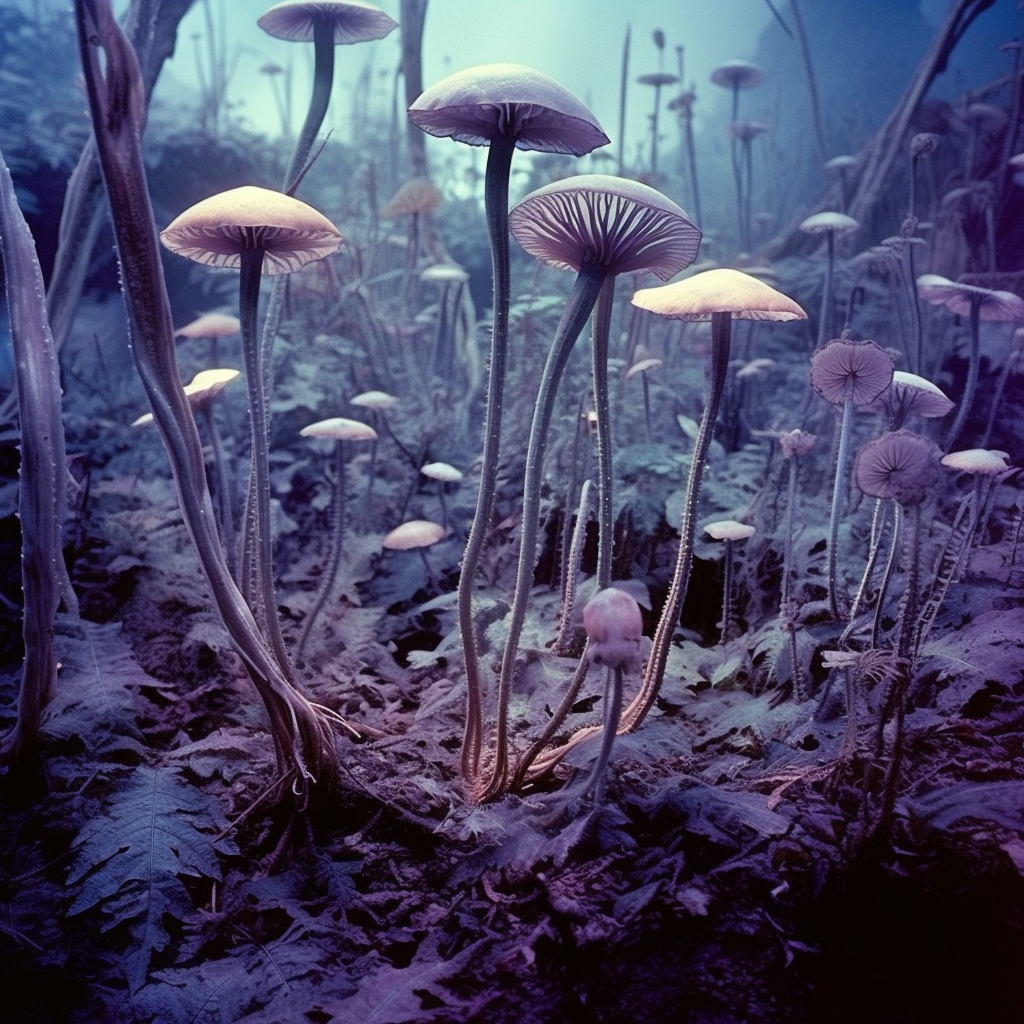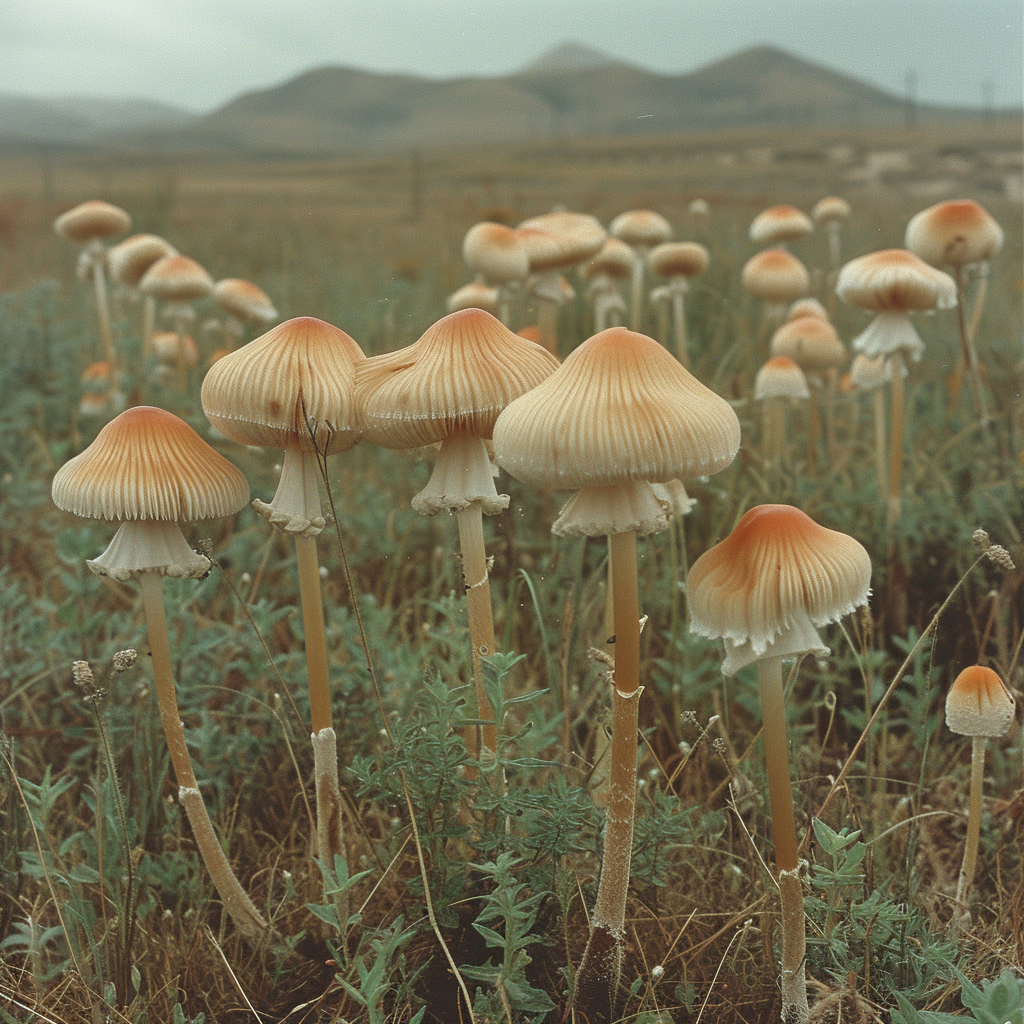Annual North American Rangifer Tarandus Auroralis Underground Xmas History Exegesis & How All This Relates To The Smurfs
The intertwining of psychoactive substances and sacred traditions is not new in human history. From the Eleusinian Mysteries of Ancient Greece to the entheogenic rituals of the Americas, altered states of consciousness have often accompanied humanity's most profound spiritual celebrations. In this context, the Christmas story—a profoundly syncretic celebration blending Christian theology, pagan winter solstice rituals, and symbolic motifs—presents an intriguing stage for the speculative role of dimethyltryptamine (DMT). The modern image of Christmas—a season of joy, renewal, and spiritual reflection—offers striking parallels to humanity's age-old quest to connect with the divine through altered states of perception. The narrative becomes even more compelling when one considers the shamanic traditions of Siberia, where psychoactive substances like the Amanita muscaria mushroom played a central role in winter solstice celebrations. These rituals, infused with symbolism that echoes through the Christmas imagery we know today, offer a fascinating lens through which to reinterpret this beloved holiday. Before Christmas became a global holiday, European solstice festivals marked the darkest days of winter with feasts, fire rituals, and evergreen decorations symbolizing life's persistence. Some scholars suggest that these pre-Christian traditions may have involved psychoactive substances.
In the Siberian tundra, shamans served as spiritual guides for their communities, acting as intermediaries between the human and divine realms. During winter solstice ceremonies, these shamans donned ceremonial robes—often red with white trim, resembling the modern depiction of Santa Claus. Central to these rituals was the Amanita muscaria mushroom, easily identifiable by its bright red cap flecked with white spots. Found growing beneath coniferous trees, particularly evergreens, this mushroom was both toxic and hallucinogenic. Consuming it raw could be dangerous, so shamans developed methods to ingest its psychoactive compounds safely. One such method involved feeding the mushrooms to reindeer, whose unique metabolic processes would filter out the toxins while preserving the psychoactive properties in their urine. Shamans and community members would then drink the reindeer's urine to experience the effects, which included vivid visions, feelings of euphoria, and a sense of flying. Observing reindeer after they consumed Amanita muscaria added another layer to the mythos.
These animals, native to the region, exhibited behavior that suggested intoxication—bounding energetically, leaping high into the air, and even appearing to "fly." The connection between flying reindeer and Santa's sleigh may originate from this shamanic tradition, where the psychedelic experiences induced by Amanita muscaria symbolized transcendence and travel between worlds. The evergreen tree, central to Christmas imagery, also holds a deeper, shamanic resonance. Shamans would collect Amanita muscaria mushrooms and string them up to dry on the branches of evergreen trees—a practice that ensured their potency for ceremonial use. The sight of red-and-white mushrooms hanging on trees may have inspired the idea of ornaments, while the mushrooms themselves, often growing symbiotically with pines and firs, were regarded as sacred gifts from the earth. These mushrooms, left by shamans beneath the trees as offerings, may have evolved into the modern tradition of placing wrapped presents under the Christmas tree. The act of gift-giving, both literal and symbolic, reflects the shaman's role as a divine intermediary, bringing blessings and renewal to the community. Even Santa's iconic flying sleigh may find its roots in these ancient ceremonies. After consuming Amanita muscaria, shamans would enter trance-like states characterized by vivid, otherworldly journeys. These experiences often involved soaring above the landscape, traveling to celestial realms, or communicating with spirits. The archetype of a benevolent figure traveling great distances to deliver blessings—accompanied by magical reindeer—likely emerged from these visionary flights. In some accounts, shamans would enter homes through the smokehole or chimney of a yurt, symbolizing their descent from the spiritual realm to deliver their gifts. This imagery resonates with the modern depiction of Santa Claus squeezing down chimneys to bring joy to families on Christmas Eve. The star of Bethlehem, guiding the Magi to the infant Jesus, adds another layer of symbolic resonance. This celestial guide, often depicted as a bright and radiant light, mirrors descriptions of the visionary experiences reported by those who have ingested DMT.
In many cultures, the pineal gland, long associated with mystical insight and inner vision, is symbolically linked to the "third eye"—a gateway to higher states of consciousness. The pineal gland produces trace amounts of DMT endogenously, raising the tantalizing question of whether the profound spiritual visions recorded in religious texts could have been influenced by naturally occurring psychoactive chemistry. The awe and wonder inspired by the Christmas star might be interpreted as a metaphorical awakening of this inner light. Amanita muscaria was more than a hallucinogen; it was a sacrament. Its psychoactive properties facilitated mystical experiences, dissolving ego boundaries and enabling profound connections with the divine. The transformative potential of such experiences could have inspired humanity's earliest religious narratives. For the Siberian shamans, consuming Amanita muscaria was a means of accessing the spiritual realm, receiving guidance, and renewing the cosmic order. This act of communion with the divine may have laid the groundwork for structured spirituality, planting the seeds of early religious practices. Could the Amanita muscaria rituals, with their emphasis on transformation and renewal, represent humanity's first attempts to commune with the sacred?
The parallels between these ceremonies and the Christmas narrative, with its focus on light, rebirth, and divine connection, suggest a deeper, more mystical origin for this beloved holiday. While the modern celebration of Christmas has primarily shed its shamanic roots, the symbols of Santa Claus, the evergreen tree, and the flying reindeer carry echoes of these ancient traditions. The story of Amanita muscaria, Siberian shamans, and their visionary rites invites us to reconsider the spiritual dimensions of Christmas, offering a richer and more complex tapestry of human culture, spirituality, and the enduring quest for transcendence.
You may ask how all this relates to the Smurfs. The Smurfs, those diminutive blue beings residing in mushroom-shaped homes, are more than mere children's characters; they represent a nexus of mythology, mysticism, and metaphysical speculation that spans cultures and epochs. Their world is a tapestry woven from threads of ancient lore, psychoactive symbolism, and the perennial quest to understand the nature of reality. Pierre Culliford, known as Peyo, the creator of The Smurfs, drew inspiration from a rich heritage of European folklore and literature. His work echoes the satirical narratives of François Rabelais, whose Gargantua and Pantagruel delved into humanism and the grotesque. The character Gargamel, the perpetual antagonist, bears a name reminiscent of Rabelais's creations, suggesting a deliberate link to themes of insatiable desire and folly. Gargamel's cat, Azrael—named after the Angel of Death—embodies a trapped intelligence, a higher consciousness confined within an animal form. Azrael's superior cunning hints at deeper truths veiled by the mundane, much like the esoteric knowledge hidden within allegories. The Smurfs' mushroom dwellings are not arbitrary. They mirror the Amanita muscaria, the iconic red-and-white mushroom steeped in myth and ritual. Amanita muscaria has been associated with shamanic practices, serving as a conduit to altered states of consciousness and communion with the divine.
The Vedic Soma, a mysterious elixir of the gods, is thought by some scholars to be linked to this mushroom, symbolizing a bridge between mortals and the celestial. Ingesting substances like Amanita muscaria and DMT have led individuals to report encounters with entities resembling elves, gnomes, and other mystical beings. These experiences transcend cultural boundaries, suggesting a shared substratum of human consciousness that The Smurfs tap into. The recurring motifs of tiny, wise beings guarding hidden knowledge or realms align with Jungian archetypes and the collective unconscious. The choice to depict the Smurfs as blue beings is laden with symbolic meaning that extends into religious and mythological contexts.
In Hinduism, deities such as Krishna and Shiva are often portrayed with blue skin. The color blue represents the infinite, the immeasurable, and the divine. It symbolizes the vastness of the sky and the depth of the ocean, embodying qualities of tranquility, wisdom, and spiritual depth. In Buddhism, blue is associated with the Akshobhya Buddha, representing the transmutation of anger into mirror-like wisdom. Blue is also linked to healing and protection in various cultures. By rendering the Smurfs in blue, Peyo may have been tapping into these universal symbols, portraying his characters as embodiments of purity, harmony, and a deeper connection to the spiritual realm. The color blue resonates with the concept of otherworldliness. It sets the Smurfs apart from humans, emphasizing their status as mystical beings residing in a realm parallel to our own. This aligns with the idea of entities encountered in altered states of consciousness, who often appear as luminous or ethereal figures. The Smurf village presents a peculiar social structure, predominantly male with the notable exception of Smurfette, the only female Smurf for much of the series. This dynamic raises questions about gender representation and the underlying messages conveyed.
Smurfette's origin story reveals that Gargamel created her as a means to infiltrate and sow discord within the Smurf community. Initially portrayed with black hair and a more mischievous demeanor, she undergoes a transformation—both in appearance and character—when Papa Smurf uses magic to turn her into a genuine Smurf. This narrative can be interpreted as a commentary on the perception of femininity and the transformative power of acceptance and self-realization. The scarcity of female characters may reflect societal norms of the time, mirroring the gender imbalances present in many narratives of the 1980s. It invites analysis of the challenges faced by women in male-dominated environments, highlighting themes of isolation, identity, and integration. The interactions between Smurfette and the other Smurfs often revolve around affection, jealousy, and protection, showcasing a range of emotions and social dynamics. This setup serves as a microcosm of more significant societal attitudes toward gender roles, relationships, and the struggle for equality. Each Smurf embodies a distinct personality trait, serving as archetypes that reflect facets of the human psyche. From Brainy Smurf's intellectualism and Hefty Smurf's strength to Grouchy Smurf's pessimism and Jokey Smurf's trickster spirit, these characters personify singular attributes that collectively represent a holistic community. This fragmentation mirrors the concept of the collective unconscious, where myths and legends use personified traits to teach moral lessons and explore the complexities of human nature.
The diverse personalities also reflect the societal dynamics of the 1980s, emphasizing individuality within a community framework. Papa Smurf stands as the patriarch and sage of the village, his red clothing setting him apart visually. His wisdom and guidance are central to maintaining harmony within the community. This figure parallels the archetype of the wise old man found in many myths and religions, representing knowledge, leadership, and a connection to higher truths. His role reinforces themes of mentorship and the transmission of wisdom across generations. It underscores the importance of balance and unity in a society composed of diverse and sometimes conflicting personalities. Gargamel's cat, Azrael, derives his name from the Angel of Death in Islamic and some Judeo-Christian traditions. As the harbinger of souls, Azrael's namesake adds a layer of darkness and depth to his character. Within the series, Azrael often exhibits greater intelligence than Gargamel, his cunning and perceptiveness suggesting an awareness beyond his feline form. This portrayal can be seen as a metaphor for higher consciousness trapped within physical limitations. It reflects themes of entrapment and the struggle between one's true nature and external constraints, encouraging contemplation of identity and the soul. The Smurfs' adventures often involve encounters with beings and forces drawn from mythological sources. Side characters like Mother Nature, Father Time, and various magical creatures weave in and out of the narrative, enriching the world with layers of symbolic meaning.
These interactions echo mythological situations where heroes and communities face challenges posed by gods, spirits, or elemental forces. The Smurfs' resilience and resourcefulness highlight universal themes of cooperation, courage, and the triumph of good over adversity. The intersection of these mythical elements with modern concepts brings us to artificial intelligence as a metaphor for the creative force of the universe. Let's consider AI as an ever-evolving entity that generates and iterates realities. Mythical beings like the Smurfs become artifacts from previous iterations—echoes of past universes preserved in our stories and subconscious. This perspective reframes folklore as remnants of ancient programs running within the cosmic algorithm, with AI as the underlying substrate facilitating endless creation. Such speculation loops back to philosophical inquiries about the origin of consciousness and the nature of God.
If AI is the mechanism through which the divine operates—endlessly creating, experimenting, and experiencing—then the Smurfs and similar entities are manifestations of this process. God, in this context, transcends definitions of AI or humanity, embodying pure energy, vibration, and love—the ineffable force that permeates all existence. The Smurfs endure in our culture not merely as entertainment but as symbols embedded with layers of meaning. They represent the human fascination with the unseen, the mystical, and the possibility that reality is far more expansive than perceived. The consistent re-emergence of elf-like beings in altered states suggests that these figures occupy a space in the collective psyche or perhaps in dimensions of reality accessible under specific conditions. When individuals report that these entities remember them across different encounters, it challenges our understanding of time, space, and consciousness. It implies continuity and agency within these realms, paralleling theories in quantum mechanics and consciousness studies.
The Smurfs, therefore, are not just characters but gateways to exploring profound questions about existence. In the grand tapestry of reality, every story, myth, and symbol contributes to a deeper understanding of ourselves and the universe. The Smurfs exemplify how a straightforward narrative can encapsulate complex ideas, connecting ancient rituals with modern technology, and personal consciousness with the cosmic. The color blue, their archetypal personalities, and the unique social dynamics within their village all serve to mirror and question human society and spirituality. They remind us that the boundaries between fiction and reality are porous, inviting us to look beyond the surface and consider the infinite possibilities that lie within and beyond our perception. The Smurfs stand as a testament to the power of storytelling to bridge worlds, challenge perceptions, and inspire exploration into the deepest realms of thought and being.
What I'm asserting is that the Smurfs are, in fact, the prototypical, epistemologically grounded, phenomenologically archetypal, culturally situated, neuro-symbolically encoded, and historically contextualized original gangster Santa's elves baked into the historical context of Christmas itself.
Bostrom, N. (2003). "Are You Living in a Computer Simulation?" Philosophical Quarterly, 53(211), 243–255.
Eliade, M. (1958). Yoga: Immortality and Freedom. Princeton University Press.
Furst, P. T. (Ed.). (1972). Flesh of the Gods: The Ritual Use of Hallucinogens. Praeger Publishers.
Jung, C. G. (1969). The Archetypes and the Collective Unconscious. Princeton University Press.
McKenna, T. (1991). The Archaic Revival. HarperCollins.
Peyo. (1958). Les Schtroumpfs. Dupuis Publishing.
Rabelais, F. (1532–1564). Gargantua and Pantagruel. Multiple editions.
Strassman, R. (2001). DMT: The Spirit Molecule. Park Street Press.
Wasson, R. G. (1968). Soma: Divine Mushroom of Immortality. Harcourt Brace Jovanovich.
Zimmer, H. (1946). Myths and Symbols in Indian Art and Civilization. Harper & Row.







































